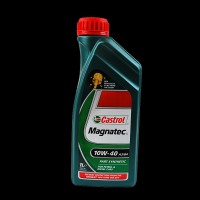Mazda XR 8 evolve
Workshop
© Copyright Reserved - United Kingdom
Ideal Screen Composition 1024 x 768
TOOLS
Useful Tools
Lubricants for the RX8 - Oil
A free template by Lucknowwebs.com for WYSIWYG WebBuilder 8
Which oil should I use in my RX-8?
It’s one of the most common questions asked by all RX-8 owners and prospective owners alike, and certainly one we get asked an awful lot too; ‘What type or kind of oil should I be putting into my RX-8?’ It’s important not to under-estimate the importance of this question too (and even more so the answer), as using the wrong type and grade of oil can cause a number of problems all detremental to your car’s engine.
We’ve compiled two variants of our answer for your convenience. So, depending on how much you’d like to know; the short and simple answer is straight to the point and the longer more detailed version explains the how’s and why’s that usually follow:
A Brief Answer:
Rotary Revs recommends a 10w40 Semi-Synthetic engine oil of good branding for use in your rotary engine.
The reason the 10w40 is recommend this slightly thicker rating (over the Mazda recommended 5w30), is to help protect you from stationary gear bearing failure. It is important to use a semi-synthetic oil rather than fully (synthetic) because semi-synthetics will burn reasonably cleanly and leave fewer carbon deposits behind in your engine; reducing the risk of apex seal obstruction which can lead to serious problems, resolvable only via an engine rebuild.
A little more detailed answer:
For a more detailed explanation of why we recommend 10w40 grade oil for your RX-8 and to find out how using alternative grades can adversely affect your engine, read on… Since way back in 1967, in the days of the Mazda Cosmo 110s, rotary engines have been ran on either 15w40 or 10w40 mineral oil. It was later found however, that switching to using synthetic oils posed a number of problems;
1.Corrosion of the rubber o-rings inside the engine
2.The release and then subsequent build-up of harmful deposits inside the engine
3.Higher cost of synthetic oils which despite being more durable are wasted when used in a rotary engine (See ‘Performance’ below).It wasn’t until 2003 with the dawn of the RX-8 that Mazda started to recommend 5w30 oil, specifically for its flagship rotary-powered sports coupe (amidst claims of better fuel economy and improved performance). The problem with this recommendation though, becomes our fourth problem:
4.5w30 grade oil is simply too thin to maintain the oil pressure required to sufficiently protect the Stationary Gear Bearings in the RX-8 engine.
So we now have four major problems, all relating to the type of oil you use in your RX-8. Each of these problems, along with the effects these oils have on the internal components of your engine, are explained further below;
Corrosion of the Rubber O-rings
Synthetics and internal engine components
The rubber oil control ring o-ring’s in Mazda’s RX-8 were switched from the traditional rubber base material to a more modern Viton based rubber material which can better withstand the aggressive chemicals in modern oils. It’s quite normal to fit RX-8 (Viton) rubber control ring o-rings in earlier model rotaries, when rebuilding RX-7 engines (and earlier) for instance.
Release and then subsequent Build-up of Harmful Deposits
Achieving a smooth, clean burn
Fully synthetic oils, generally speaking, are better in every way for automotive use and are used in most cars traditionally. Among the many benefits is an improved durability, better performance and this sort of oil doesn’t break down over time, unlike semi-synthetics. But…
There is an issue in the ability of oil to burn inside your (non-traditional) rotary engine, in terms of how cleanly it burns and this is very important. For whilst some oils may burn cleanly, not all synthetic oils do. Most leave behind dirty substances such as carbon and ash. Deposit build-up of these substances can cause your rotor apex seals to stick and spark plugs to foul. Should carbon build up excessively (causing your seals to stick) the most likely outcome, in terms of a remedy, would be a complete stripping down of your engine for a thorough cleaning of all internal components and then rebuild. This is about as serious and major as it gets in terms of repair work.
After almost 50 years of rotary engine manufacture, there are no known cases of anyone reporting issues with excess, un-burnt carbon deposits from mineral or semi synthetic based oils when used in engines, that are otherwise well looked after and used properly. So it is well proven that mineral based oils work and work well in rotary engines, where fully synthetic oils often do not.
Higher Cost of Synthetic Oils
Keep it mineral-based, semi-symthetic and change it regularly!
The down side to using mineral based engine oils is that they don’t last as long as a synthetic oil. In time, all lubricants lose their ability to lubricate as molecules are dispersed by evaporation and oxidation. Additives are added, designed to combat and control acids and viscosity, these additives are normally consumed as they do their job too. Synthetic oils are proven to withstand this degradation up to as much as 5x times longer than comparable mineral based oils. However, because the oil in the sump of a rotary engine needs to be kept clean in order for it to be injected into the combustion chamber, regular top-ups and complete oil changes are very important - regardless of whether synthetic or non synthetic oil is being used.
In short, this means that the highly recommend 3-6,000 mile oil changes negates any benefit of having a longer lasting synthetic based oil in the sump. Fortunately though, mineral based oils are generally significantly more cost effective than fully synthetic varieties, making the cost of those regular oil changes that little bit easier to bear.
5w30 = Too Thin to Maintain Oil Pressure
Viscosity
As mentioned above, rotary engines traditionally have always been run on a 10w40 or 15w40 grade mineral oil, especially in the UK.
As it is understood, the RX-8 engine code, 13b MSP, was designed no differently than the RX-7 engine codes before it (13b REW’s, RE’s, DEI’s) and so we assume that Mazda technicians had every intention of using the same grade of oil in the MSP as they had used previously in the RX-7. So why the change in recommended grade of oil to use?
Well, in 2002 ‘Total’ sold Mazda the concept of achieving better fuel economy by using a thinner grade engine oil. Mazda responded by introducing 5w30 across their entire range of cars, and a lot of other car manufactures at the time quickly followed suit. It is true that using a thinner grade oil will cause less drag in the engine and in turn, unlock a little extra horsepower and slightly improve fuel economy - at an almost un-measurable rate in terms of the day-to-day running of a rotary engine it must be said!) It is also true that many modern day, highly tuned, piston engines must be run on thinner and thinner engine oils as well.
It wasn’t until the RX-8 owners had started to break through the 50,000 mile benchmark that rotary specialists , started to notice the problems that the thinner grade oils and low oil pressures were causing in the Renisis engines.
Stationary Gear Bearing Failure was fast becoming a phrase synonymous with RX-8 engine failure among enthusiasts and specialists alike. It can be seen all too often and in fact, every single RX-8 engine that has been stripped down (regardless of mileage) had shown some level of wear on the stationary gear hydrostatic bearings.
This is why one should consider, on switching to 10w40 engine oil, to help counteract this issue and hopefully extend the life of your engine and protect those gear bearings.
To summarise:
Your RX-8 Renesis engine needs oil to lubricate it’s bearings. This is important in order to avoid the harmful build-up of ash and carbon which can cause rotor apex seals and side seals to stick.
The thinner grade oil recommended by Mazda (5w30) is too thin for the oil pump inside the RX-8 to maintain the oil pressure necessary in an idle state, at low revs per minute (RPM). 10w40 oil is recommended to help reduce the wear of the Stationary Gear Bearings, thus extending the life of your engine.
It is also recommended for the oil to be drained, completely, and changing the oil at least, once every 12,000 miles or per annum; ideally changing at every 3,000 - 6,000 miles, topping up whenever necessary.
The tell-tale signs of Stationary Gear Bearing Failure that you should listen out for are:
• a low droning engine note; this will be apparent at idle and through-out the rev range. If you are experiencing this
noise the engine will normally also be very reluctant to rev when in the higher rev band.
• a sharp and loud clatter when initially starting the engine after it has been parked for a time; this could best be
described as a knocking or banging from the engine area and will only likely last a couple of seconds after
starting the engine. Some have described the sound as if someone were banging on an old metal dust bin with a
baseball bat repeatedly (at high revs).
• a loud audible clatter at high RPM; this noise can be intermittent as it’s generally related to engine temperature
and could be described as similar sounding to static or white noise which you might here from an un-tuned TV or
radio.
Courtesy RotaryRevs RX8 Specialists
To Chapters
MAIN WEBSITE
Workshop
Contents
Publications
Tools
Contents
Workshop Pages
W1
W3
W2
W3
W4
click
click
W5
For details on Click:
Lubricants Continued......
>
Lubricants
W6





